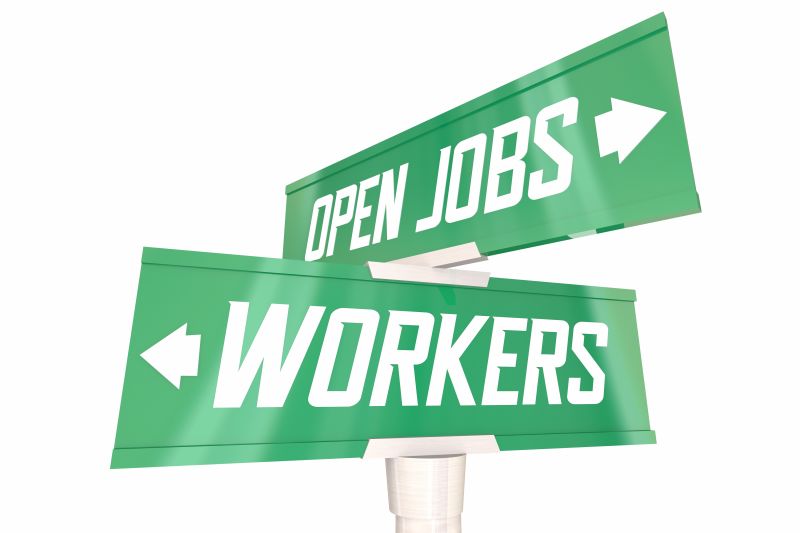Dealing with Labor Shortages in 2022

The Great Resignation
During the pandemic and immediately afterward, workers in the US decided enough was enough. Whether motivated by pay, lifestyle, changed perspectives, new opportunities, or other factors, the outcome was the same: workers decided to take their time elsewhere.
The "Great Resignation" added to an already difficult situation. Fabricators have been concerned about hiring and retaining skilled labor for decades, with labor shortages becoming more and more acute as workers favor high tech or service jobs over trades like metal fabrication. In fact, many fabricators are more concerned about labor shortages right now than almost anything else. In The Fabricator's 2021 "What Keeps You Up At Night?" survey, some 53% of fab shops rated skilled worker availability as their number one concern. That's in an environment where steel prices have been 2.5 to 3x higher than normal. It's telling that even with steel prices going crazy, fabricators are still more concerned about labor shortages.
I may not be qualified to say why the great resignation happened, or to guess at the general economic and social implications of the shift. But at OSH Cut, we do have some thoughts on how pay might figure into the equation, at least for metal fabricators.
Beating the Labor Shortage

At OSH Cut, our philosophy is that if we want skilled laborers who will stick around and make a career out of sheet metal fabrication, we need to pay a living wage. That may seem like a no-brainer, but if you look at the industry as a whole, the numbers don't add up.
Consider the general advice that you shouldn't spend more than 28% of your gross income on a house payment. Assuming a loan for $250k at 5% APR over 25 years, that adds up to a house payment of $1461 / month, not including property tax, homeowner's insurance, and private mortgage insurance, often paid monthly and held in escrow. Altogether, a first-time homeowner might easily expect to pay $1600 / month for a starter home in Utah County, Utah.
To match the 28% rule-of-thumb, a metal fab employee needs to make a little over $68k / year just to entertain the idea of buying a home.
How does that stack up against median wages in the industry? In The Fabricators & Manufacturers Association 2020 Salary/Wage Benefit Survey, 31 surveyed companies reported wages for a variety of positions. A CNC Equipment Programmer grosses a median $52k / year. An estimator, $63k. A forklift operator makes a little under $40k / year. A general laborer comes in at a minimal $32k / year.
In fact, of about 50 floor-level manufacturing positions, only 4 positions reported pay above $68k / year, all of them management positions, and all of them barely crossing the "living wage" threshold based on mortgage payment size. The operational roles actually producing parts - equipment operators, welders, shipping personnel, etc. - all make significantly less than the bare minimum to consider buying a house. Even a skilled laser operator with two years' experience makes a median $41.6k / year, a full $26k below what they'd need to buy a home in Utah.
Is it any wonder that manufacturing companies have a difficult time finding skilled labor? In today's economic climate, almost no fabrication employee makes a living wage.
Not an Easy Problem
My intent isn't to be critical. The fab industry is extraordinarily competitive. The FMA's 2021 Financial Ratios & Operational Benchmarking Survey reports an average net margin (EBITDA) across surveyed fabricators, of only 8.7%. That doesn't leave a lot of breathing room to, in some cases, as much as double worker pay. Faced with a sudden, dramatic increase in labor costs, fabricators could go out of business; or (alternatively) they could increase prices, fail to remain competitive, and THEN go out of business as cost-sensitive customers go elsewhere.
Shops' hiring strategies may also deliberately target younger people for fab jobs, while providing opportunities for career advancement and increased pay. High school students might be fine working as general laborers for $35k / year over a summer. And if they like the work, there may be opportunities for career growth into equipment operation and management.
But a low-pay temp strategy isn't generally going to produce skilled laborers who want to stick around. If the only path to barely-livable pay is to get promoted to management, most floor workers won't be able to participate. And when laborers leave to find a job where they can buy a house and support a family, some employers might ironically opine about how nobody is willing to work these days, and how it is so hard to find skilled labor.
But there are no mysteries, here.
OSH Cut's Model
We decided early on that we had to pay our people enough to live comfortably. As of Feb 23rd, 2022, our entry-level pay starts at little over $21 / hour. Pay raises are thereafter tied to certifications, so that as our fabricators learn new equipment, they can make more for their experience no matter what they are doing on the floor. Between weekly bonus pay and certification-based raises, any worker can expect to be making well over $70k within a year if they actively work toward certification. That includes everyone from laser operators to shipping clerks, recent high school grads to 40 year-olds with families. Additional career growth opportunities are provided from there for shop supervisors (for those inclined to management) or "super-techs" (for those who'd rather be operating).
We are always looking for more people, so check out our careers page if you are on the hunt.
Remaining Competitive
Paying our employees more gives OSH Cut an edge. We minimize employee turnover, and we keep a core set of highly-skilled, engaged employees who know how to produce quality parts, consistently, and efficiently. And we haven't had any problems at all finding skilled workers.

We are also obsessed with continuous improvement. We work hard to identify issues that make our fabricators' lives difficult. Then we fix the problems. Sometimes that means new equipment, sometimes custom-developed software, and sometimes simple process changes. At the end of the day, making our people's lives easier means that they can get more done with fewer headaches, less stress, and higher quality overall.
We are just getting started, and we are excited to see where the next few years will take us.